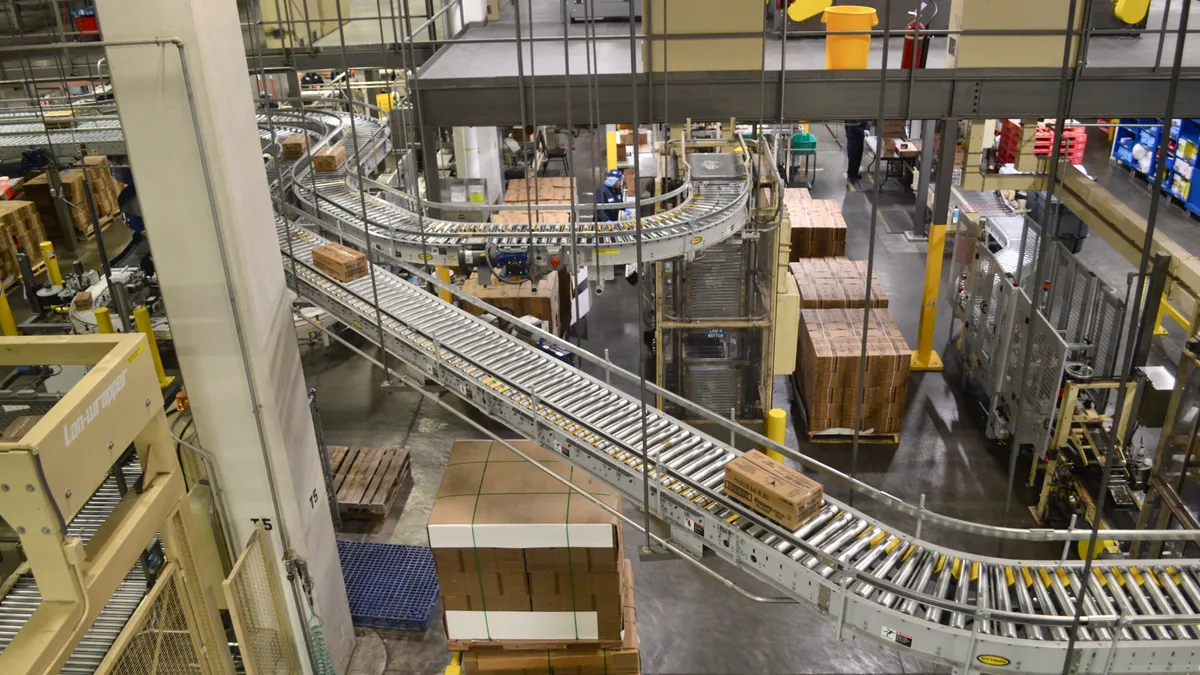Dive Brief:
- Supplier deliveries continued to slow as manufacturers worked to restock their inventories, according to the latest figures from the Institute for Supply Management's manufacturing report, released Monday. The ISM Supplier Deliveries Index was at 60.5 in October, up from 59.5 in August. Readings above 50 indicate slowing deliveries.
- "It continues to be labor issues, primarily at supplier facilities, coupled with difficulty in companies providing forecasts to them," ISM Manufacturing Business Survey Committee Chair Timothy Fiore said on Monday. Companies ISM surveys have likely been understating forecasts, leading suppliers to struggle to keep up when demand grew, he said.
- The monthly survey also found that pricing power remains with suppliers as the Prices Index rose nearly three percentage points to reach 65.5% for October. It is the highest that prices have been since October 2018, according to ISM.
Dive Insight:
The overall PMI grew 3.9 percentage points to reach 59.3% in October. It was the fifth-straight month of growth for the manufacturing sector, but the number doesn't indicate if the sector has reached pre-pandemic levels of output.
While supplier deliveries were still slowing, companies did indicate that their inventories were finally growing. The Inventories Index reached 51.9 after showing contracting inventories in the September report.
"We entered expansion, indicating that suppliers made progress catching up to production demand and panelist companies are stocking for the future," Fiore said on a call with reporters.
But the improvement seen in the inventory numbers was not shared in the measure for customer inventories, which continue to be too low, according to the ISM survey.
"It appears that the customers of our panelists cannot keep enough inventory to satisfy short term consumption by their customers," Fiore said. "So, at a 36.7, we then have the 10-year low now for three months."
This is seen as a positive for the manufacturing sector, specifically the panelist companies, as it means they have more business coming their way. And the index's new order numbers show that business is already flowing. The New Orders Index surged up 7.7 percentage points to reach 67.9%. The Backlog of Orders Index was also in growth territory, which "indicates that new order rates exceeded production growth again," Fiore said.
The report shows a manufacturing sector that has managed to restart production to meet strong demand amid a pandemic that continues to break daily caseload records. This reality has led some manufacturing executives to manage analyst expectations about what could happen in the months to come.
"There continues to be social unrest and economic distress in many parts of the world that also affect the prospects for category growth," Procter & Gamble COO and Chief Financial Officer Jon Moeller said on the company's most recent earnings call. "These same dynamics can result in an increased cost to operate and there is an ongoing risk of supply chain disruption, our operations or those of our suppliers."
The manufacturing industry, like many others throughout America, are also anxiously awaiting results from Tuesday's election, Fiore said.
"And it doesn't matter who wins," he said. "I think the fact that we now will know what the next four years look like ... is going to allow business leaders to make decisions again."














